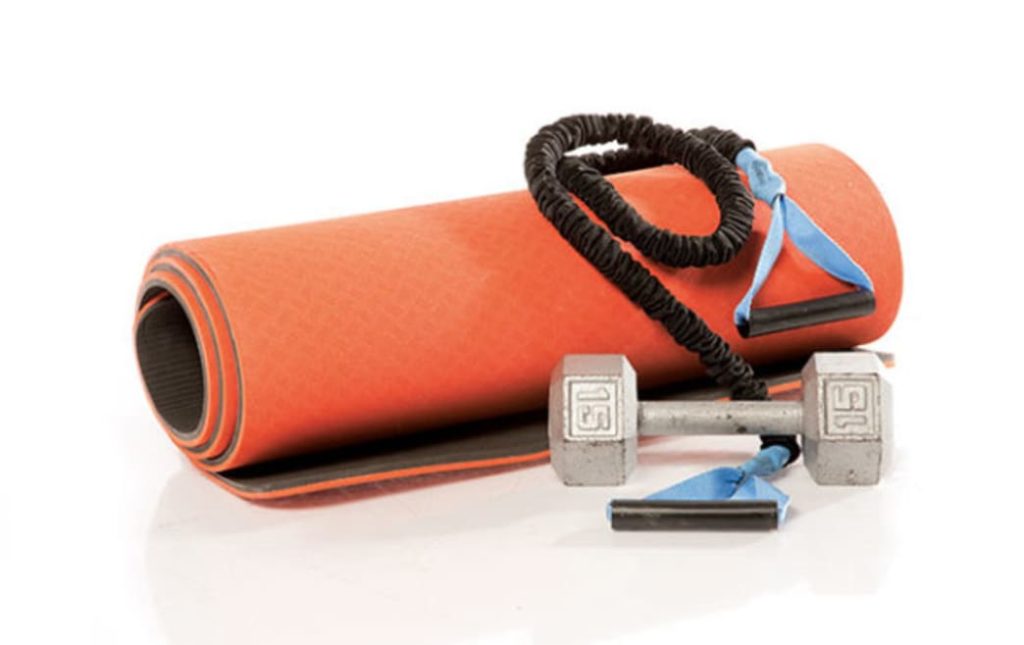
You can crunch in the gym until your butt leaves a permanent imprint in the mat, but if you’re weighed down by stress, your belt buckle isn’t likely to budge.
“When you’re stressed, your body releases cortisol, a hormone that causes visceral fat to accumulate,” says Carol A. Shively, PhD, professor of pathology and comparative medicine at Wake University School of Medicine in Winston-Salem, North Carolina. Her research shows that animals with the most social stress develop more fat in the abdomen, and it’s expected that people respond in the same way. The more stress you’re under, the more likely you are to need that bigger belt.
So, how do you keep your stress —and your physique — in check? Relax your body and mind with our exclusive “get happy fast” stress coping mechanisms.
1. Relax Your Breath. “When you take a deep breath, you force the diaphragm to engage, which sends the ‘all clear’ signal to the nervous system and triggers the relaxation response,” explains Kate Hanley, author of The Anywhere, Anytime Chill Guide: 77 Simple Strategies for Serenity. Practice a technique known as the “humming bee’s breath” to zap stress before bed. The buzzing sound you create has a naturally calming effect on the nervous system to help soothe the body and mind. Here’s how to do it:
Featured image provided by Oxygen Magazine- Sit comfortably with a straight spine.
- Place your hands gently over your eyes to shut out the light. Rest your index fingers on your brow to calm your thoughts, and your pinkie fingers on your cheeks as a reminder to keep them soft. Use your thumbs to plug your ears to silence any sound. Let your elbows rest downward.
- Keep your lips gently closed, with your teeth parted slightly – this enables you to hear the buzzing vibration more distinctly in the brain. Keep your jaw relaxed.
- Exhale all the air out of your lungs. Inhale through your nose, then exhale slowly while making a steady humming, buzzing sound. This is one round.
- Repeat 10 times. Each time, let the sound fill your whole head, heart and body.
- Stand in front of a wall with bare feet, keeping what you consider to be your very best posture.
- Recruit a friend to take four images of you: front, back and either side.
- Print the pictures out, one to a sheet.
- Draw dots on the pictures like this: front side — between your feet and on your nose; back side —between your feet and shoulder blades; side views – on your anklebone and ear.
- Fold each paper in half along the dots.
- Analyze your photos: are the two halves of your body the same? Do you lean forward, back or to one side? Does your head jut forward like a turtle? Does your pelvis tilt forward or back?
- Make note of your imbalances, then work to correct them. Take more photos next month and compare your progress over time.
- Sit in a cross-legged position.
- Deeply inhale and exhale through the nose two or three times to prepare.
- Roll the tongue, curling the sides in towards the center to form a tube. Stick the end of your tongue out between pursed lips. If you can’t roll your tongue, just purse your lips to make a small “o” shape with your mouth.
- Inhale through the tube of the tongue.
- Exhale through the nose.
- Repeat five to 10 times.
Practice Mindfulness
Research shows that individuals who practice mindfulness — being completely in touch with the present moment – have a higher shot at dropping pounds, boosting their immune system, improving their memory and cutting stress. Here’s how you can do it: 16. Concentrate on one task at a time. In the gym, focus on getting through each individual rep instead of thinking about the entire set that’s ahead of you. Feel your muscles respond to each repetition and stay in the present moment. 17. Add pauses to your day. Start with only a few minutes a day and work your way up. Use this time to close your eyes, take deep breaths and calm your thoughts. 18. Cut distractions. Try a workout with no music, or eating away from the TV. Without anything to divert your attention, you’ll find it easier to listen to your thoughts. 19. Going for a mindful walkis a great way to stress less. Turn your focus away from the past or future, and pay attention to your pace, the rhythm of your stride, the feeling of the ground beneath your feet, and the smell of nature around you. 20. Be your own cheerleader. A useful stress coping mechanism is calming feelings of anxiety with relaxing self-talk. Focus on positive outcomes, and feed your brain solutions rather than worries. Try these:- “I am doing everything necessary to solve the problem.”
- “I will get through this.”
- “I will push myself to get it done.”
- “I can handle this. I’ve done this before and have succeeded.”
- “I will feel proud of myself once I get through this.”
- “I will close my eyes, take a deep breath and try again.”
- Lie face up on the floor.
- Exhale long and slow — purse your lips and imagine blowing out of a straw to expel the last drop of air.
- Inhale through your nose and imagine the breath first filling your belly. Pause for a moment.
- Continue inhaling and feel your rib cage inflate. Pause.
- Finish inhaling by imagining the breath filling the top lobes of your lungs, which extend all the way up to the collarbone.
- Expel all the air out through pursed lips, and repeat five to seven times.


